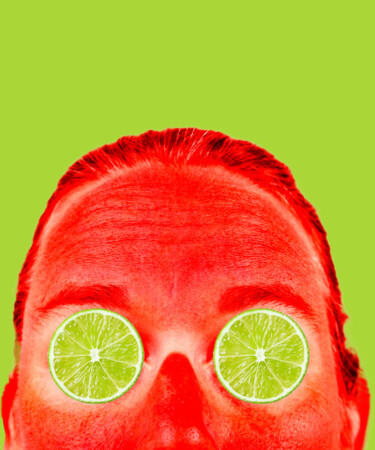When the sun is high and the summertime heat is in full effect, citrus-forward cocktails rank high on the list of drinks we crave — whether it’s Margaritas, Daiquiris, Gimlets, or maybe a few cheeky Mojitos if we’re feeling like putting the work in. All are bright, refreshing, and certified harbingers of good times — ideally poolside or with a few toes in the sand.
Of course, most Marg-heavy days unfortunately end with a gnarly hangover, but there’s a lesser-known consequence of enjoying citrusy drinks outdoors that only adds insult to injury — and unlike a hangover, the effects can last quite a while.
The phenomenon, colloquially known as “Margarita burn,” is an inflammatory topical reaction that occurs when someone gets lime, lemon, or grapefruit juice on their skin and then goes out into the sun for extended periods of time. These citrus fruits contain chemicals called furocoumarins, which become active when exposed to ultraviolet rays — specifically UVA rays. Although several plants produce them as a natural defense against pests and pathogens, the compounds can also break down skin cells and trigger a rash when humans get citrus juice or oil on their skin and bask in the sun.
The scientific name for this reaction is phytophotodermatitis. Phyto is derived from the Greek word for “plant.” Photo translates to “light” or “sun.” And dermatitis means “skin rash.” According to medical news outlet MDedge, Englishman Dr. Robert Klaber coined the term in 1942, though knowledge of the phenomenon dates back millennia. In the early 1900s, doctors used the phrase “berloque dermatitis” to describe the reaction (berloque being the French word for “trinket” or “charm”), following a spike in rash cases among people wearing colognes and perfumes containing bergamot oil.
Although most encounter furocoumarins via lemons and limes, the compounds aren’t exclusive to citrus. They’re also in figs, celery, carrots, parsnips, dill, cumin, and a handful of other veggies, herbs, and spices (in varying quantities). Luckily, most people won’t have to worry about these furocoumarin-containing plants unless their beach hang involves crudité platters and a round of obscure veggie cocktails. Ultimately, citrus is the main culprit of Margarita burn.
According to the academic medical center Cleveland Clinic, symptoms typically start appearing within hours to a couple days following prolonged sun exposure. They can range from small, itchy red patches to large painful blisters. The rash sometimes appears with streak marks, mirroring where citrus juice has trickled down across the patient’s skin. Once the rash and inflammation have subsided, the affected area will often turn slightly dark and take anywhere from a few weeks to several months to regain its natural color.
Since the severity of Margarita burn can vary greatly, some cases will come and go like a mild sunburn. If the blistering is extreme, patients should seek medical attention. As dual-board- certified dermatologist Dr. Keira Barr told Healthline, “People with severe blistering or skin that’s sloughing off will face a risk of secondary infection, so it needs to be treated like a burn.”
The good news is that Margarita burn is easily preventable. For beach bartenders, it’s best to wear gloves while juicing citrus, as the job usually entails making a lot of citrus-forward cocktails and spending a lot of time out in the sun. For the casual beachgoer or pool party host, a thorough handwashing with soap and water after making drinks will do the trick. Otherwise, the juice is — quite literally — not worth the squeeze.
